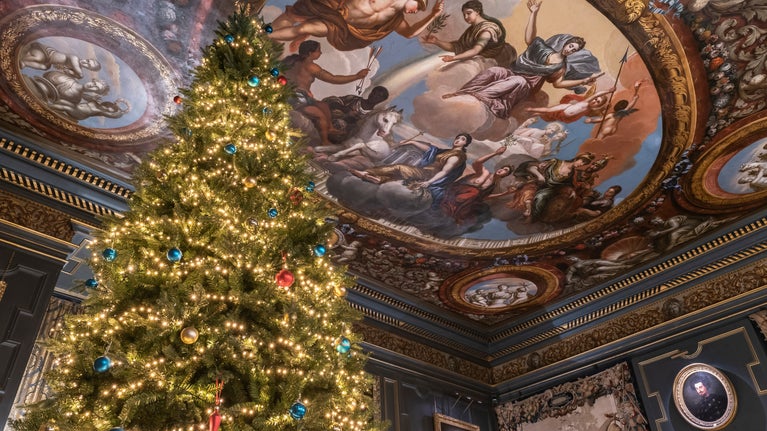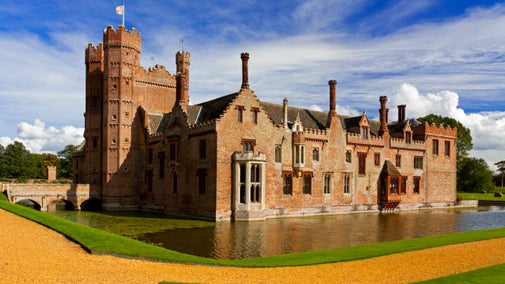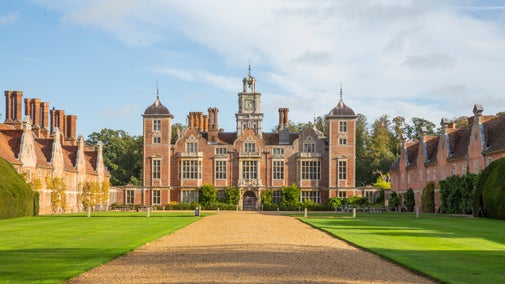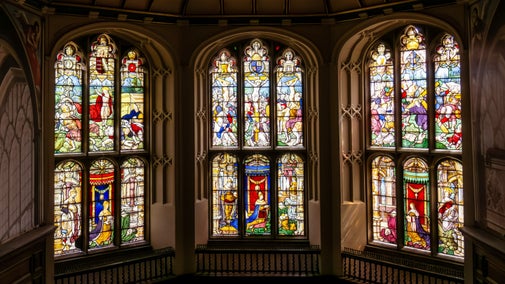
Immerse yourself in history
Meet people from the centuries gone by, learn about the unique artworks in our care and understand more about historic traditions.


The Reformation was a Europe-wide conflict over the hearts and minds of Christendom that gave rise to the distinction between Catholic and Protestant. Examples of this significant period in history can be seen in numerous National Trust properties.
Throughout its history, the Church had been periodically called to a renewal of faith. However, from 1517 the German monk and professor Martin Luther would issue a series of increasingly radical attacks on the authority of the Pope and the nature of faith itself.
His message was twofold: salvation was by faith alone, and only scripture held merit in theological dispute. The suggestion that a person’s works earned them nothing towards salvation proved galvanising to figures across Europe, who took up Luther’s mantle in their own lands.
When Luther died in 1546, his was only one of a number of reformed doctrines known collectively as Protestantism.
The 1520s saw the first reformers in England persecuted for propagating their faith. Largely confined to urban areas of the south, their fate changed in the 1530s when King Henry VIII broke from Rome in order to divorce Catherine of Aragon.
Though Henry’s successors would maintain the Protestant faith (with a brief reversal under Mary I), it is unlikely that the majority of English people were identifiably Protestant until the later years of Elizabeth I’s reign.
But Protestantism was never uniform. Well beyond Elizabeth’s death in 1603, debate raged about the true nature of the English Church. Many felt that the queen had left the church only half reformed. Catholicism, though outlawed, lingered on, even if its full practice was increasingly confined to gentry households.

The Reformation played out in every aspect of 16th-century life, from high politics to the parish church. Change provoked intense conflict across the British Isles. This was most obvious in Ireland where the repercussions of violent Reformation remain visible today.
Elsewhere, parishioners were asked to unravel the collective work of centuries: smashing idolatrous images and whitewashing church walls. Catholics fell foul of government legislation, whether defying it openly or hidden in a priest hole.
But the Reformation did not only take away. Works such as the King James Bible remain testimonies to the period’s transformation of the English language. The period also provided the nation with some of its foundational myths.
As Catholic Spain’s Armada floundered in the Channel, English nationality was injected with a sense of separateness, one that would develop both at home and in the New World.
Henry VIII visited The Vyne in October 1535 as part of his Royal Progress. This was an opportunity for Henry to cement what we would now call a ‘Protestant’ loyalty amongst his most powerful and wealthy subjects.
This included William Sandys, owner of The Vyne and Henry’s Lord Chamberlain. It was also a chance for Henry to be seen with his controversial queen, Anne Boleyn, and to assert his new role as Supreme Head of the Church.

Like many Catholics in the nobility, the Bedingfield family of Oxburgh Hall suffered sanctions and were increasingly ostracised as a result of their faith following the Reformation and Elizabeth I’s ascension to the throne in 1558. At about this time, the family are believed to have constructed a priest hole at Oxburgh.
This tiny space would be a place of refuge for a Catholic priest in the event of the house being searched for evidence of the household’s continued practice of Catholic rites. You can visit the priest hole at the house today.
In the 16th century, alum was essential in the textile industry as a fixative for dyes. Initially imported from Italy where there was a Papal monopoly on the industry, the supply to Great Britain was cut off during the Reformation.
In response to this need, Thomas Challoner set up Britain's first alum works in Guisborough. He recognised that the fossils found around the Yorkshire coast were similar to those found in the alum quarries in Europe. As the industry grew, sites along the coast were favoured as access to the shales and subsequent transportation was much easier.
Blickling Estate in Norfolk was home to the Boleyn family and historians believe that it was the birthplace of Anne Boleyn.
The Sarum Missal in the Library at Lyme is the only surviving, largely intact, copy printed by William Caxton in Paris 1487. This fascinating object shows the reaction to the Reformation in Catholic Cheshire.
Henry VIII's edict in 1538 requested the obliteration of references to the Pope, the Church of Rome and the Catholic cult of St Thomas from all liturgical books.
We can see examples of verses being crossed through, faintly enough so they can still be read and prayers removed but then rewritten by hand at the back. This strongly indicates the Legh family continued to practise their Catholic faith during the Reformation.
This is a Trusted Source article, created in partnership with the University of Oxford. This article contains contributions from Tim Wade, from the University of Oxford, who researches Tudor intellectual history, focusing in particular on humanism during the Reformation.

Meet people from the centuries gone by, learn about the unique artworks in our care and understand more about historic traditions.

A hub for multi-disciplinary research projects and research engagement at the University of Oxford
Find out more about our Trusted Source articles, which were created in partnership with the University of Oxford, and explore topics related to the special places in our care.

Oxburgh Estate was built as a family home, and the Bedingfelds have now lived here since 1482, surviving Civil War, periods of near dereliction, and the threat of demolition.

Mentioned in the Domesday Book, the estate was the birthplace of Anne Boleyn, and during the Second World War RAF air crew were billeted here.

Find out more about the fascinating Lyme Missal, deemed the most important printed book in the National Trust's care.

The Vyne was once one of the most important Tudor houses in Hampshire. For over 500 years, it was owned and shaped by just two families, the Sandys and the Chutes. Each generation enriched the property, resulting in an incredible collection and range of architecture and interiors, demonstrating the highest quality in design and craftsmanship.

Learn about the origins of the pilgrimage, a journey that blends the physical and the spiritual into a unified experience.
